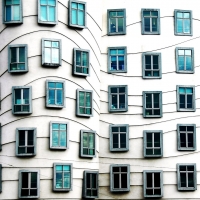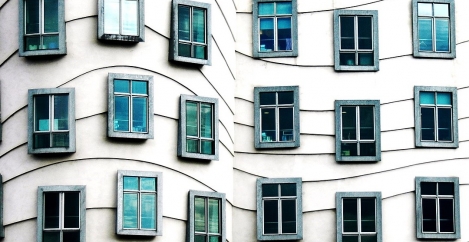February 18, 2021
The return to buildings will now focus attention on ventilation
 The UK COVID-19 vaccination programme is well underway. Once the over 50s, younger people with health conditions, NHS and care workers have received the vaccine, Prime Minister Boris Johnson has been clear that current lockdown restrictions could be lifted in stages with schools and business a top priority. The situation is under review, but there is an expectation that business premises could reopen as early as Easter, when a large proportion of the working age population may not have been vaccinated. That means the focus in workplaces and other multi-occupant spaces, especially those open to the public, must remain on limiting transmission to prevent the spread of coronavirus to un-vaccinated people, and especially on factors such as ventilation.
The UK COVID-19 vaccination programme is well underway. Once the over 50s, younger people with health conditions, NHS and care workers have received the vaccine, Prime Minister Boris Johnson has been clear that current lockdown restrictions could be lifted in stages with schools and business a top priority. The situation is under review, but there is an expectation that business premises could reopen as early as Easter, when a large proportion of the working age population may not have been vaccinated. That means the focus in workplaces and other multi-occupant spaces, especially those open to the public, must remain on limiting transmission to prevent the spread of coronavirus to un-vaccinated people, and especially on factors such as ventilation.
Advice from the Government’s Scientific Advisory Group for Emergencies (SAGE) in its document Role of Ventilation in Controlling SARS-CoV-2 Transmission, is that “Ventilation should be integral to the COVID-19 risk mitigation strategy for all multi-occupant public buildings and workplaces”.
The SAGE publication follows the World Health Organisation’s acknowledgement last July of the possibility of airborne transmission of coronavirus. This in turn confirmed the lead provided by the Chartered Institution of Building Services Engineers (CIBSE) in its COVID-19 Ventilation Guidance, issued in May, referenced in the SAGE document.
The need for effective ventilation in helping limit the spread of COVID-19 is based on growing evidence that coronavirus can be spread by tiny particles called aerosols.
The role of ventilation
The acts of breathing, talking, coughing and sneezing all produce droplets and aerosols that may, if the host is infected, contain pathogens. Larger droplets fall by gravity within 2m from the source, which is why social distancing is recommended. Smaller aerosols, however, can stay airborne for hours, which enables them to travel longer distances where they could infect secondary hosts, particularly in poorly ventilated spaces.
The advice from SAGE, based on modelling, is that “exposure to aerosols approximately halves when the ventilation rate is doubled”. This is in line with the underlying principle adopted by CIBSE which is: dilute and ultimately remove as many airborne pathogens from a space as possible by exhausting them to the outside to reduce the chance of deposition or inhalation.
In practice this means taking steps to increase both the supply of outside air and exhaust ventilation in buildings as much as is reasonably possible while minimising, or eliminating, any recirculated air.
The challenge
In buildings with mechanical ventilation systems a key intervention recommended by CIBSE is to start the ventilation at least an hour before occupancy and to run the system for at least an hour at the end of the day to help purge the building of aerosols. Similarly, for demand-controlled ventilation systems, where the rate of fresh air supply is adjusted to maintain a minimum CO2 level, CIBSE recommends changing the CO2 set point to a lower value to help maximise the flow of outside air.
CIBSE also recommends air is not recirculated between spaces or rooms occupied by different groups of people, unless recirculation is the only way of maintaining adequate levels of outside air to occupied spaces.
If the ventilation rate in a space is designed, constructed and maintained at current design standards, then SAGE says the risk of aerosol transmission is likely to be low. In most workplaces and public environments, the Advisory Group say this equates to an outside air supply rate of 8-10 l/s/person; which is the minimum outside air supply rate recommended by CIBSE and also satisfies the building and workplace regulations.
Providing effective ventilation is more of a challenge in older buildings where systems may not have been designed in line with current ventilation standards. According to SAGE, the risk of aerosol transmission is likely to be significantly higher in poorly ventilated multi-occupant spaces.
CIBSE’s COVID-19 Ventilation Guidance document provides information to help building owners and operators understand the types of ventilation systems commonly encountered in buildings and how these can best be used to reduce the risks of airborne infection.
The right balance
Getting the ventilation rate right is a difficult balance. Ventilation has well-established associations with health and has a complex relationship with other factors including energy, noise, air quality and thermal comfort. Those modifying an existing system or altering its operation need to be mindful of the possibility of unintended consequences; for some mechanical installations it would be wise to seek expert advice before taking any action.
For naturally ventilated buildings, where a space is reliant on opening windows and doors for ventilation, the advice is that windows and vents should be used more than normal. In warm weather opening windows is a typical response. However, it is important windows are kept open, even if only by a small amount, to maintain ventilation when it is cooler outside.
Of course, opening windows can result in draughts and occupant discomfort. An alternative solution to complement background ventilation is to encourage all occupants to take regular breaks simultaneously throughout the day when the space can be purged with outside air by opening windows and doors.
Unlike distancing and hand washing, ventilation requirements cannot easily be distilled into one simple approach that everyone can follow. Assessing ventilation in many environments is challenging and will require the type of engineering expertise CIBSE members can provide to ensure any proposed mitigation measures will be effective for a particular building type, ventilation system, user group and activity.
CIBSE COVID-19 ventilation Guidance is available as a free download from the CIBSE website.

Hywel Davies is Technical Director of the Chartered Institution of Building Services Engineers (CIBSE)














